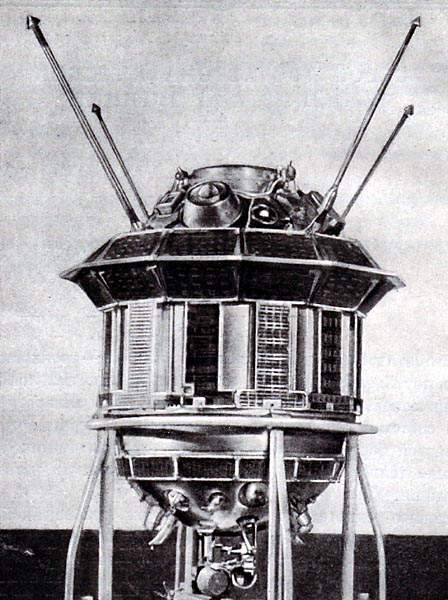The Soviets have done it again, reaching yet another milestone in space exploration before the Americans.
This time, the goal was the Moon's far side, which had never been seen before. The reason for this is that the Moon is tidally locked in its orbit around the Earth such that it cannot rotate (much as an object floating in water will stay fixed with is heavy end pointing down). As a result, humanity has only seen one side of the Moon for the entirety of human existence. Isaac Asimov once joked, in the form of a medicore science fiction tale, that there is no back side to the Moon–that it's really just a false front movie prop.
But there is a far side. We know this because the Soviets have sent its third "Lunik," formally named Luna 3, sailing around the Moon to take pictures of it. The results promise to be a darn-sight better than what we managed with Explorer 6 and a much closer target.

It is not a surprise that this new and improved Luna is such a capable craft. It weighs an impressive 278.5 kg, which is nearly twice as heavy as the American Atlas Able Pioneers, imminently scheduled for lunar launch. Not only does the new Soviet probe have a real movie camera on board, but it also mounts a slew of scientific experiments designed to probe the magnetic fields and charged particles of cislunar space. I'm really hoping that its measurements will shed light on why the Earth's magnetic field gets so wibbly and wobbly about 70,000 kilometers up; the leading current theory is that it is due to interactions with the sun's magnetic field.
Now, at this point, you're probably wondering why I haven't included Lunik's photos of the Moon. Well, the answer is simple: they haven't arrived yet. As I write, the probe is making its closest approach to the Moon. It will then fly about 70,000 kilometers beyond the Moon before circling back for a close pass by the Earth, whereupon it will transmit its photographic cargo. That will happen in just under two weeks.
Thus, my enthusiasm may be premature. It is quite possible that Luna 3 may suffer a catastrophic error that prevents it from sending pictures home or even taking pictures in the first place. Even if that happens, the Soviets will still have been the first to succeed at a tricky bit of orbital billiards.
—
P.S. Galactic Journey is now a proud member of a constellation of interesting columns. While you're waiting for me to publish my next article, why not give one of them a read!
(Confused? Click here for an explanation as to what's really going on)
This entry was originally posted at Dreamwidth, where it has comments. Please comment here or there.

